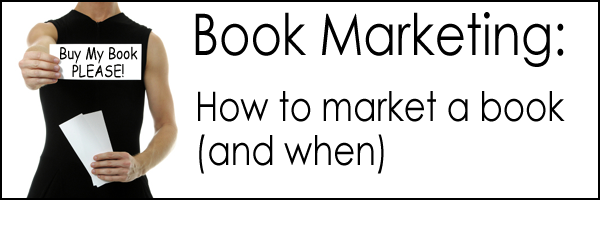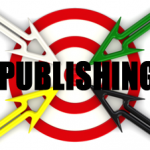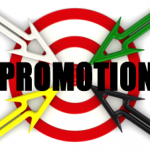
Book Marketing: How To Market A Book (and when)
If you knew that nobody, NOBODY would ever read your book, would you have written it? Probably not. We write because we want to share our work with others. Sharing (unless you are in grade school) means others must buy the work of course.
For many authors, marketing is almost an afterthought. For some it is a real challenge. For many it becomes a nightmare.
Marketing does not start AFTER the book has been written – marketing starts BEFORE the book is written.
It is important that marketing is taken into consideration during all the phases of the model – production, publishing and of course, promotion.
Entire books could be written on each of these subjects – (we have several hundred questions that must be answered on our initial analysis form). We won’t be able to even begin to cover everything that must be considered, so we’ll start with the most general and basic points.
CLICK HERE to get a free, no-obligation marketing and publicity assessment that will show you how to get in front of your target audience
Production
Cover
In the old days, when books sat on a shelf, it was vitally important to have a cover that would draw the attention of the shopper. That is just as important, if not more important today, as the cover is still the first thing potential buyers see. Get it wrong, and people will just move on to the next book that looks more interesting.
Back Cover Copy
Back cover copy used to be a primary focus for print books (and still is). If the book is an ebook, that all important back cover copy becomes a description that is posted on book sites. In today’s book marketing model, that description must be formulated for maximum impact with two entities – potential buyers AND search engines.
Developing copy that will impress both readers and search engines is much more difficult today. Get it wrong and the book could be invisible or perhaps simply ignored.

Publishing
There are many factors to consider. Two of the most important factors are formats and distribution.
Formatting
Poorly formatted books will likely get poor reviews, regardless of the quality of writing. In addition there are a wide variety of formats available today:
Hardcover
Softcover
Ebooks (including mobi and epub)
Audiobooks
Distribution
Distribution is another key factor that can influence sales. In addition to traditional channels such as bookstores and the Internet, we must also consider libraries, educational markets, specialty sales outlets, targeted distribution and a host of other distribution options. Get either of these wrong and sales could suffer greatly.

Promotion
The big one. We could do hundreds of articles on this subject. So here is a very general overview:
1. ‘Marketing’ is not telling somebody about something. Telling somebody about something is one thing. Telling somebody about something in such a way as to cause them to take action:
do an Internet search
share their personal information
press a buy button
use their credit card
share what they have found with their friends
pass the word to others
become a fan
That type of communication is another discipline entirely. It is both an art and a science. Creating real results – action – through powerful communication strategies – only that can truly be called ‘marketing'”
2. Don’t chase buyers around, urging them to buy your book. Instead learn how to get your work in front of pre-qualified, pre-sold buyers through optimization strategies. That’s how success is created today.
3. First impressions are everything in marketing so don’t present a generic, non-branded header on your site that says something like “John Smith – Author”. Instead be certain that you present a powerful, well-researched brand and branding statement specific to buyer profiles and make sure it is the first thing potential buyers see. Remember it is not what you want to say – it is what they want to hear.
4. Don’t use amateurish, self-centered ‘me-me-me’ language (“I write because”, or “I think” or “I am”). That approach is the sure road to failure. Instead, speak from the buyers’ perspective and state specifically why your work will meet your buyer’s needs (“You will get”, “Readers will find”). Remember their primary question is “What is in this for ME?”
5. Don’t try to sell your work to “everybody” or to a generic “anybody age 8 to 80” audience. No matter what you might believe, your book is not for everybody. Even if it IS for everybody, the power of marketing is in specifically targeting small groups of people. Make certain you do understand your buyer profiles (age, gender, specific needs and interests, etc), and understand their needs as they perceive them. Hitting their hot buttons is a primary key to success. “Everybody should read this book” is a very poor, extremely weak message.
CLICK HERE to get a free, no-obligation marketing and publicity assessment that will show you how to get in front of your target audience
6. Don’t present one message to all buyers. Again, sharply segment your audience and present a laser sharp message developed specifically for each one of those segments you have developed through researching the needs of your target market profiles.
7. Don’t have threatening calls to action on your book pages (buy now). When you walk into a store, the clerk does not run up to you and say “Give me your credit card now.” If “Buy This Book” is the first thing your visitors see, that is what YOU are doing. That is very threatening and amateurish. Instead engage with your audience through non-threatening calls to action (download sample, etc).
8. Don’t attempt to use social media as a sales tool. This is a fallacy. Ask anybody who has ever tried it. Instead use sharply optimized social media posts to get in front of key influencers, develop interest and to brand you and your work.
9. Don’t endlessly chase ‘maybe’ buyers around. Remember that nearly everybody today uses the Internet to make book purchasing decisions. Internet marketing a ‘reverse’ or ‘mirror image’ of traditional, real world marketing. You don’t have to find them. You must allow them to find you. You don’t have to sell, yell or tell them. You must instead get in front of those who have already made a book buying decision.
10. Don’t spend all your marketing time chatting, talking to or engaging with other authors who will never buy your work. Though a bunch of ‘likes’ from other authors or ‘reviews’ from your peers can make you feel good, that is pretty much what it is – a ‘feel good’ exercise. If you want to feel good, that is one thing. If you want to sell books you must instead spend your time engaging with interested potential buyers.

